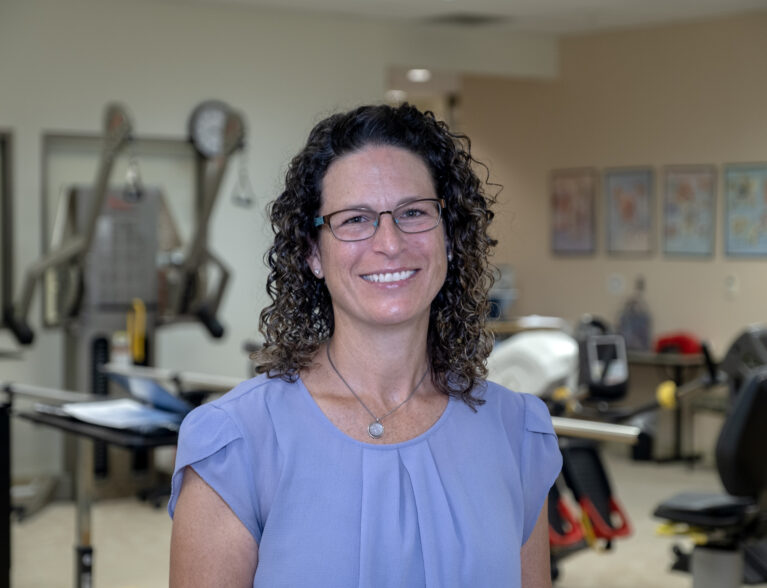
Remember when falling used to be a piece of cake? When you were a kid, and even in your teens and 20s, you’d hop right back up, probably not even check to see if you were bruised or bleeding anywhere and return to whatever you were doing before you took a tumble.
Those days are long gone for many of us, but physical therapist Paulette Swanson, who develops and coordinates fall prevention education at the Trauma Department at Health First’s Holmes Regional Medical Center in Melbourne, has strategies to keep you on your feet.
“After age 30, strength and endurance decrease 10 percent every decade,” says Swanson.
“Getting started early [learning to avoid falls] is very important.”
According to Centers for Disease Control and Prevention (CDC), 1 in 4, or 14 million, older adults fall yearly. Only about half of those who fall tell their doctor. In addition, falling once doubles the chance of another fall.
But the good news is most falls can be prevented. Taking precautions, such as starting an exercise routine and having regular checkups can help keep you safe.
Swanson says if you’ve had four or more falls, you need to get a fall risk assessment from your doctor.
Cleveland Clinic advises that some people try to reduce their fall risk by limiting their activity and striving to be more careful, but that’s not enough.
A fall risk assessment is important because knowing the factors that increase your chances of falling helps you minimize your risk of taking a tumble. The assessment can also help you maximize your ability to move and be active and maintain a healthy, independent life.
Harvard University Medical School advises that you see your doctor not only if you sustained a recent fall, but also if you feel unsteady on your feet or are worried about falling. Your doctor may ask about your fall history and assess your risk factors using a questionnaire.
Some other common assessments that can help identify an increased risk for falls include:
• Strength, gait, and balance tests.
• Blood pressure measurements while sitting, lying and standing.
• Visual acuity test.
• Vitamin D levels.
• Review of potential home hazards.
• Evaluation of your feet and footwear.
Based on these findings, your doctor may adjust treatment of your medical conditions and develop a personalized care plan to reduce your risk of falling.
“There are three different body parts that keep you safe,” says Swanson, “your eyes, inner ear, and feet that can feel the floor. If one of those is diminished, the other two must work very well to help compensate.”
The Orlando Health Medical Group discusses health problems that can trigger a fall – from everyday ailments to more serious issues – on its website, OrlandoHealth.com. Among them are:
• Dehydration. This can lead to urinary tract infections and kidney problems that may cause confusion and weakness.
• Vitamin deficiency. Vitamin B12 and iron deficiencies can cause anemia. Having a deficit of vitamin D can lead to osteoporosis, resulting in weak or brittle bones.
• Vascular and endocrine health.
• Stroke or atrial fibrillation.
And, as Swanson notes, inner ear and vision problems can both be culprits.
Age-related loss of muscle mass, problems with balance and gait, and blood pressure that drops too much when you get up from lying down or sitting (called postural hypotension) all are risk factors for falling.
In addition, says Swanson, side effects from medicines such as antihistamines and sleep and blood pressure medications can contribute to falls.
Staying still to avoid falling is not a wise option.
Moving is a must, Swanson advises. A gym is a great place to exercise, but it’s important to figure out what makes you comfortable while you work out so you will stick with it, she adds.
Many senior centers have low-cost or no-charge exercise facilities and experts who can help you with a program that will help you maximize your strength and mobility.
Despite our best efforts, falls can still happen and knowing what to do if you fall can help you avoid or limit injury. “Fall on the largest part of your body,” Swanson advises, “not on an outstretched arm.” Other tips include:
• Lean forward, keeping your knees bent and feet down – this gives you better control of the direction of your fall.
• Lean your shoulder into the fall to protect your head.
• Aim for a grassy or soft area.
• Stay relaxed.
Approximately one-third to half of adults over the age of 65 are affected by limitations in mobility – the ease with which one can move freely and purposefully in the environment.
Assistance devices such as canes and walkers can aid in mobility, if needed, while providing an extra layer of safety and precaution against falls. Consult your doctor regarding the best form of mobility aid for your needs.
Paulette Swanson, PT, is outpatient rehab manager at Health First. She has been a physical therapist for more than 20 years. She has a bachelor’s degree and Master of Science from University of Hartford, and a Ph.D. from Simmons College. Her passion is educating people on ways to prevent falls. She develops and coordinates fall prevention education with the Trauma Department at Health First’s Holmes Regional Medical Center. Call 321-434-9122 for information.



